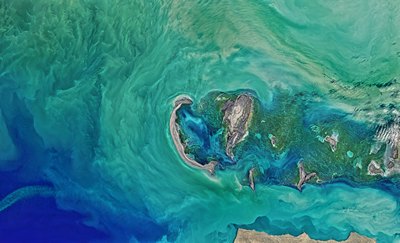Documents
This section features public documents and files uploaded by the stakeholders and custodians of the Caspian Sea environment.
 Threats to Biodiversity - Studies and findings of CEP II StudiesSat, 21/12/2024 - 16:41There is a widespread perception that the Caspian is in a state of ecological decline, and that one aspect of this is a decline in biodiversity. This is of particular concern, due to the status of the Caspian as a unique water body inhabited by a large number of endemic species. There is also a widespread belief that the C
Threats to Biodiversity - Studies and findings of CEP II StudiesSat, 21/12/2024 - 16:41There is a widespread perception that the Caspian is in a state of ecological decline, and that one aspect of this is a decline in biodiversity. This is of particular concern, due to the status of the Caspian as a unique water body inhabited by a large number of endemic species. There is also a widespread belief that the C
- Description
There is a widespread perception that the Caspian is in a state of ecological decline, and that one aspect of this is a decline in biodiversity. This is of particular concern, due to the status of the Caspian as a unique water body inhabited by a large number of endemic species. There is also a widespread belief that the Caspian is very sensitive to the impacts of industrial activities and in particular to those associated with oil and gas production and transportation.
- Attached documents
- Metadata
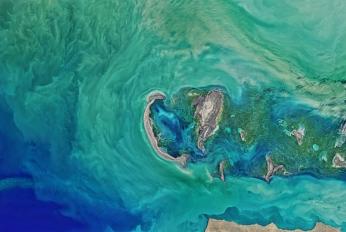 Decline in BioresourcesSat, 21/12/2024 - 16:13The Caspian Sea, world largest lake, is bordered by Republic of Azerbaijan, Islamic Republic of Iran, Kazakhstan, Russian Federation and Turkmenistan. Out of 122 fish species and subspecies living in the Caspian Sea, 40 species are believed to be commercial and presently 25 species are the main exploited fish (Ivanov, 2000).
Decline in BioresourcesSat, 21/12/2024 - 16:13The Caspian Sea, world largest lake, is bordered by Republic of Azerbaijan, Islamic Republic of Iran, Kazakhstan, Russian Federation and Turkmenistan. Out of 122 fish species and subspecies living in the Caspian Sea, 40 species are believed to be commercial and presently 25 species are the main exploited fish (Ivanov, 2000).
- Description
The Caspian Sea, world largest lake, is bordered by Republic of Azerbaijan, Islamic Republic of Iran, Kazakhstan, Russian Federation and Turkmenistan. Out of 122 fish species and subspecies living in the Caspian Sea, 40 species are believed to be commercial and presently 25 species are the main exploited fish (Ivanov, 2000). At present sturgeons, tulka and Caspian Sea seals are considered as shared commercial stocks between Caspian Sea range states.
- Attached documents
- Metadata
 1st_National Report_Russian Federation_in 2006-2007_for_Tehran Convention_-engSun, 26/03/2023 - 21:46The first national report of the Russian Federation on the implementation of the Tehran Convention was prepared in 2012 for 2006-2007 - from the moment of entry into force of the Convention. The National Report for 2006-2007 of the volume of 79 pages in Russian and 73 pages in English was prepared by “CIP“ (T.Butylina, A.Sav
1st_National Report_Russian Federation_in 2006-2007_for_Tehran Convention_-engSun, 26/03/2023 - 21:46The first national report of the Russian Federation on the implementation of the Tehran Convention was prepared in 2012 for 2006-2007 - from the moment of entry into force of the Convention. The National Report for 2006-2007 of the volume of 79 pages in Russian and 73 pages in English was prepared by “CIP“ (T.Butylina, A.Sav- Description
The first national report of the Russian Federation on the implementation of the Tehran Convention was prepared in 2012 for 2006-2007 - from the moment of entry into force of the Convention. The National Report for 2006-2007 of the volume of 79 pages in Russian and 73 pages in English was prepared by “CIP“ (T.Butylina, A.Savelyev, V.Markov, Zh.Novoselova) with financial support of the Ministry of Natural Resources of Russia.
The first national report of the Russian Federation based on a unified reporting format adopted in 2011 on KS-3 as a recommended scheme for the presentation of information by the Caspian countries. The National Report for 2006-2007 characterizes the organizational and administrative structure of the performance of obligations under the Convention, including the data of the relevant federal and regional integrated and thematic plans and development programs, as well as information on parameters, evaluations and trends and changes in the state of marine and coastal environment of the region.Первый национальный доклад Российской Федерации по реализации Тегеранской конвенции подготовлен в 2012 году за 2006-2007гг. – с момента вступления в силу Конвенции. Отчет был разработан в соответствии с решениями третьей сессии Конференции Сторон (КС-3, 2011г, Актау) на основе Унифицированного формата отчетности, принятого в 2011г на КС-3 в качестве рекомендуемой схемы представления информации прикаспийскими странами.
Национальный доклад за 2006-2007гг (объемом 79 стр. на русском и 73 стр. на английском языках) основан на анализе открытой различной тематической информации о состоянии окружающей среды и природоохранной деятельности в прикаспийских регионах России.
Специфика первых национальных докладов состоит в том, что они разрабатывались в отсутствие конвенции о правовом статусе Каспия.
Информация и данные,представленные в первом национальном докладе за 2006-2007гг. в рамках Тегеранской конвенции обозначили подходы российской национальной природоохранной политики на Каспии, которая рассматривает Каспий как единый географически и экологически системно-целостный объект. Любое воздействие на морскую среду Каспийского моря, где бы оно ни произошло, становится, в принципе, - трансграничным. Все проблемы, связанные с хозяйственной и иной деятельностью на акватории Каспия, решаются исключительно по соглашению прикаспийских государств.
Национальный доклад за 2006-2007гг характеризует организационно-административную структуру деятельности и информационного обеспечения выполнения обязательств по Конвенции, включая данные соответствующих федеральных и региональных комплексных и тематических планов и программ развития, а также информацию о параметрах, оценках и тенденциях и изменения состояния морской и прибрежной окружающей среды региона.
Доклад подготовлен «ЦМП» (Т.П.Бутылина, А.В. Савельев, В.А. Марков, Ж.Г. Новоселова) при финансовой поддержке Минприроды России.- Attached documents
- Metadata
- Year
- 2012
 Monitoring of the Caspian Seal in Turkmenistan, January – October, 2022Thu, 23/03/2023 - 08:31The Khazarskiy State Nature Reserve, the Caspian Group of the IUCN Joint SSC-WCPA Marine Mammal Protected Areas Task Force, Turkmenbashi, Turkmenistan; e-mail address: mammedowmerdan514@gmail.com
Monitoring of the Caspian Seal in Turkmenistan, January – October, 2022Thu, 23/03/2023 - 08:31The Khazarskiy State Nature Reserve, the Caspian Group of the IUCN Joint SSC-WCPA Marine Mammal Protected Areas Task Force, Turkmenbashi, Turkmenistan; e-mail address: mammedowmerdan514@gmail.com
- Description
The Khazarskiy State Nature Reserve, the Caspian Group of the IUCN Joint SSC-WCPA Marine Mammal Protected Areas Task Force, Turkmenbashi, Turkmenistan; e-mail address: mammedowmerdan514@gmail.com
- Attached documents
- Metadata
- Year
- 2022
 Special Issue of CAT news. The Persian Leopard: Status of Persian leopards in northern Iran and Central AsiaThu, 16/03/2023 - 17:09The Persian leopard Panthera pardus tulliana is an endangered large felid living in mountainous landscapes of the Caucasus, Southwest Asia and parts of Central Asia. In this paper, we review available literature to update our information on the status, population, ecology, threats, and management recommendations in regard to
Special Issue of CAT news. The Persian Leopard: Status of Persian leopards in northern Iran and Central AsiaThu, 16/03/2023 - 17:09The Persian leopard Panthera pardus tulliana is an endangered large felid living in mountainous landscapes of the Caucasus, Southwest Asia and parts of Central Asia. In this paper, we review available literature to update our information on the status, population, ecology, threats, and management recommendations in regard to
- Description
The Persian leopard Panthera pardus tulliana is an endangered large felid living in mountainous landscapes of the Caucasus, Southwest Asia and parts of Central Asia. In this paper, we review available literature to update our information on the status, population, ecology, threats, and management recommendations in regard to this big cat in the region. Most of the Alborz and Kopetdag Ecoregions harbour the largest population of Persian leopard with some protected areas having the highest densities of these carnivores. A total of 348 to 440 leopards are guessed to exist in the region, making it one of the largest continuous leopard hotspots across Asia. Almost 80% of the population exists in Iran, followed by Turkmenistan which holds the second largest Persian leopard population, while the leopard population in Kazakhstan mainly depends on transboundary transient individuals from Turkmenistan.
- Attached documents
- Metadata
- Year
- 2022
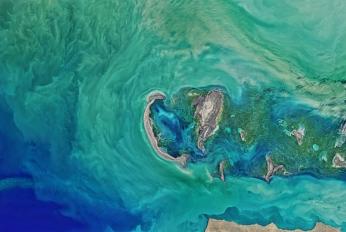 Caspian Sea State of Environment Report - SoE 2 (2019)Fri, 17/02/2023 - 09:15The present report on the State of the Environment of the Caspian Sea was developed in accordance with the requirements of the Framework Convention for the Protection of the Marine Environment of the Caspian Sea (Tehran Convention, 2003) and is one of the regional environmental cooperation mechanisms to assess the state of t
Caspian Sea State of Environment Report - SoE 2 (2019)Fri, 17/02/2023 - 09:15The present report on the State of the Environment of the Caspian Sea was developed in accordance with the requirements of the Framework Convention for the Protection of the Marine Environment of the Caspian Sea (Tehran Convention, 2003) and is one of the regional environmental cooperation mechanisms to assess the state of t
- Description
The present report on the State of the Environment of the Caspian Sea was developed in accordance with the requirements of the Framework Convention for the Protection of the Marine Environment of the Caspian Sea (Tehran Convention, 2003) and is one of the regional environmental cooperation mechanisms to assess the state of the marine environment of the Caspian Sea, in particular, pollution and its impact, based on the reports provided by the Contracting Parties and any competent international organization.
The Caspian Sea SoE 2 Report in higher resolution can be dowloaded here.
- Attached documents
- Metadata
- Year
- 2019
 Caspian Sea State of Environment Report - SoE 1 (2011)Fri, 17/02/2023 - 08:53The Caspian Sea, abundant with natural living and fossil resources, its coastal areas home to more than 15 million people, faces a series of environmental challenges. This State of the Caspian Sea Environment Report should be seen and considered as a first try out and starting point towards the creation of a shared environm
Caspian Sea State of Environment Report - SoE 1 (2011)Fri, 17/02/2023 - 08:53The Caspian Sea, abundant with natural living and fossil resources, its coastal areas home to more than 15 million people, faces a series of environmental challenges. This State of the Caspian Sea Environment Report should be seen and considered as a first try out and starting point towards the creation of a shared environm
- Description
The Caspian Sea, abundant with natural living and fossil resources, its coastal areas home to more than 15 million people, faces a series of environmental challenges.
This State of the Caspian Sea Environment Report should be seen and considered as a first try out and starting point towards the creation of a shared environmental information system promoting and securing data collection, monitoring, analysis, harmonization and public communication in support of full implementation of the Tehran Convention and its protocols. We hope that it will improve the Caspian information base, enhance the quality, accessibility and relevance of data and ultimately, contribute to strengthening the regional environmental governance framework.
The Caspian Sea SoE 1 Report in higher resolution can be dowloaded here.
- Attached documents
- Metadata
- Year
- 2011
 Биологическое разнообразиеTue, 24/07/2018 - 15:15ОЦЕНКА НАЦИОНАЛЬНОГО ПОТЕНЦИАЛА КАЗАХСТАНА ДЛЯ ВЫПОЛНЕНИЯ МЕЖДУНАРОДНЫХ ЭКОЛОГИЧЕСКИХ КОНВЕНЦИЙ
Биологическое разнообразиеTue, 24/07/2018 - 15:15ОЦЕНКА НАЦИОНАЛЬНОГО ПОТЕНЦИАЛА КАЗАХСТАНА ДЛЯ ВЫПОЛНЕНИЯ МЕЖДУНАРОДНЫХ ЭКОЛОГИЧЕСКИХ КОНВЕНЦИЙ- Description
ОЦЕНКА НАЦИОНАЛЬНОГО ПОТЕНЦИАЛА КАЗАХСТАНА ДЛЯ ВЫПОЛНЕНИЯ МЕЖДУНАРОДНЫХ ЭКОЛОГИЧЕСКИХ КОНВЕНЦИЙ
- Attached documents
- Metadata
- Year
- 2005
 Современное состояние популяции севрюги Acipenser Stellatus (Pallas, 1776) реки УралTue, 24/07/2018 - 15:08Вестник АГТУ
Современное состояние популяции севрюги Acipenser Stellatus (Pallas, 1776) реки УралTue, 24/07/2018 - 15:08Вестник АГТУ- Description
Вестник АГТУ
- Attached documents
- Metadata
- Year
- 2016
 Отчет по показателям по биоразнообразию КазахстанаTue, 24/07/2018 - 14:50Отчет по показателям по биоразнообразию Казахстана
Отчет по показателям по биоразнообразию КазахстанаTue, 24/07/2018 - 14:50Отчет по показателям по биоразнообразию Казахстана- Description
Отчет по показателям по биоразнообразию Казахстана
- Attached documents
- Metadata
- Year
- 2014
 National Report of the Republic of Kazakhstan on the Implementation of the Tehran ConventionMon, 23/07/2018 - 14:06Review of Kazakhstan's activities in fulfillment of obligations under the Tehran Convention
National Report of the Republic of Kazakhstan on the Implementation of the Tehran ConventionMon, 23/07/2018 - 14:06Review of Kazakhstan's activities in fulfillment of obligations under the Tehran Convention- Description
Review of Kazakhstan's activities in fulfillment of obligations under the Tehran Convention
- Attached documents
- Metadata
- Year
- 2017
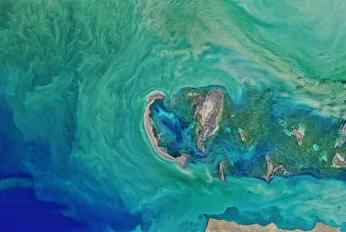 Article - Long-term and seasonal Caspian Sea level change from satellite gravity and altimeter measurementsMon, 16/07/2018 - 15:43The article examines recent Caspian Sea level change by using both satellite radar altimetry and satellite gravity data. The altimetry record for 2002–2015 shows a declining level at a rate that is approximately 20 times greater than the rate of global sea level rise. Seasonal fluctuations are also much larger than in the wo
Article - Long-term and seasonal Caspian Sea level change from satellite gravity and altimeter measurementsMon, 16/07/2018 - 15:43The article examines recent Caspian Sea level change by using both satellite radar altimetry and satellite gravity data. The altimetry record for 2002–2015 shows a declining level at a rate that is approximately 20 times greater than the rate of global sea level rise. Seasonal fluctuations are also much larger than in the wo
- Description
The article examines recent Caspian Sea level change by using both satellite radar altimetry and satellite gravity data. The altimetry record for 2002–2015 shows a declining level at a rate that is approximately 20 times greater than the rate of global sea level rise. Seasonal fluctuations are also much larger than in the world oceans. With a clearly defined geographic region and dominant signal magnitude, variations in the sea level and associated mass changes provide an excellent way to compare various approaches for processing satellite gravity data.
- Attached documents
- Metadata
- Year
- 2017
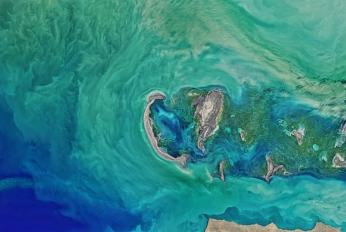 Article - Impact of the Alien Species Mnemiopsis leidyi A. Agassiz, 1865 on Fish of the Caspian SeaMon, 16/07/2018 - 15:13The data of long-term ecological studies (1999–2014) are used for assessing the impact of a new Caspian invader Mnemiopsis leidyi A. Agassiz, 1865 on marine and anadromous fish species. The introduction of the ctenophore and its massive development in the Caspian Sea have mainly affected planktophagous fish, especially the m
Article - Impact of the Alien Species Mnemiopsis leidyi A. Agassiz, 1865 on Fish of the Caspian SeaMon, 16/07/2018 - 15:13The data of long-term ecological studies (1999–2014) are used for assessing the impact of a new Caspian invader Mnemiopsis leidyi A. Agassiz, 1865 on marine and anadromous fish species. The introduction of the ctenophore and its massive development in the Caspian Sea have mainly affected planktophagous fish, especially the m
- Description
The data of long-term ecological studies (1999–2014) are used for assessing the impact of a new Caspian invader Mnemiopsis leidyi A. Agassiz, 1865 on marine and anadromous fish species. The introduction of the ctenophore and its massive development in the Caspian Sea have mainly affected planktophagous fish, especially the most abundant species anchovy sprat (Clupeonella engrauliformis Borodin, 1904) and sturgeons (Family Acipenseridae). Mnemiopsis leidyi is one of the main negative factors preventing the restoration of the populations of Caspian fishes, especially anchovy tyulka. The critical state of the resources of the spawning parts of sturgeon populations (Family Acipenseridae) has been reinforced as a result of the massive development of M. leidyi.
- Attached documents
- Metadata
- Year
- 2018
 Turkmenistan Red Data Book Plants and FunghiWed, 11/07/2018 - 09:19The Red Data Book of Turkmenistan Volume 1: Plants and Fungi Ed. 3rd, Revised and updated — Ashgabat: Turkmenistan, 2011. — 288 pp. The Book contains data on 115 species of plants, described in the articles with the reference to the status, category, importance for the gene pool preservation, brief description, distributio
Turkmenistan Red Data Book Plants and FunghiWed, 11/07/2018 - 09:19The Red Data Book of Turkmenistan Volume 1: Plants and Fungi Ed. 3rd, Revised and updated — Ashgabat: Turkmenistan, 2011. — 288 pp. The Book contains data on 115 species of plants, described in the articles with the reference to the status, category, importance for the gene pool preservation, brief description, distributio
- Description
The Red Data Book of Turkmenistan
Volume 1: Plants and Fungi Ed. 3rd, Revised and updated — Ashgabat: Turkmenistan, 2011. — 288 pp.
The Book contains data on 115 species of plants, described in the articles with the reference to the status, category, importance for the gene pool preservation, brief description, distribution, habitat, number, biological peculiarities, limiting factors, information on the introduction in cultivation, applied and proposed conservation actions, as well research proposals.
The contents of the book includes 3 species of Fungi (Eumycota), 5 species of Lichens, 2 species of Bryophyta, 8 species of Polypodiophyta, 97 species of Magnolyophyta (Anglosperms). Each article is supported by a picture and a graphic map of the species distribution in Turkmenistan. The Book is intended for nature protection services, specialists in the field of botany and ecology, teachers and students of higher educational institutions and secondary schools as well as the broad range of readers interested in the country’s flora.
- Attached documents
- Metadata
- Year
- 2018
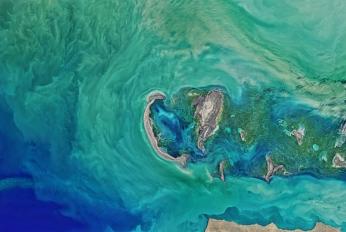 Caspian Environment Programme - Transboundary Diagnostic Analysis Revisit (2007)Tue, 12/06/2018 - 11:59The CEP TDA Revisit was completed in December 2007 following an intensive desk study of materials collected from the second phase of the Caspian Environment Programme. The intention of the CEP TDA Revisit is to provide a follow on review of the priority transboundary issues, to assess the efforts conducted during the CEP Pha
Caspian Environment Programme - Transboundary Diagnostic Analysis Revisit (2007)Tue, 12/06/2018 - 11:59The CEP TDA Revisit was completed in December 2007 following an intensive desk study of materials collected from the second phase of the Caspian Environment Programme. The intention of the CEP TDA Revisit is to provide a follow on review of the priority transboundary issues, to assess the efforts conducted during the CEP Pha
- Description
The CEP TDA Revisit was completed in December 2007 following an intensive desk study of materials collected from the second phase of the Caspian Environment Programme. The intention of the CEP TDA Revisit is to provide a follow on review of the priority transboundary issues, to assess the efforts conducted during the CEP Phase II implementation, and to extrapolate where additional efforts are warranted. The SAP and NСAPs are reviewed followed by an analysis of the priority areas of concern as identified in the SAP. The issues addressed in the TDA are: decline in biodiversity; decline in environmental quality (pollution); decline in bioresources (fisheries); decline in coastal infrastructure and habitat; and impacts of the oil industry in the region. This is supplemented by an analysis of governance mechanisms, socioeconomic conditions in the region, and stakeholder analysis and public involvement strategy.
- Attached documents
- Metadata
- Year
- 2007
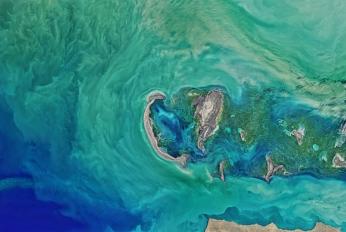 Caspian Environment Programme - Transboundary Diagnostic Analysis for the Caspian Sea. Vol. 2 (2002)Tue, 12/06/2018 - 11:55This volume aims to provide background information on the Caspian Sea in order to support the recommendations in the National Caspian Action Plans (NCAPs) and the Strategic Action Programme (SAP). Thus, this TDA is not merely a State of the Environment report, but also a look into the future based on the current political si
Caspian Environment Programme - Transboundary Diagnostic Analysis for the Caspian Sea. Vol. 2 (2002)Tue, 12/06/2018 - 11:55This volume aims to provide background information on the Caspian Sea in order to support the recommendations in the National Caspian Action Plans (NCAPs) and the Strategic Action Programme (SAP). Thus, this TDA is not merely a State of the Environment report, but also a look into the future based on the current political si
- Description
This volume aims to provide background information on the Caspian Sea in order to support the recommendations in the National Caspian Action Plans (NCAPs) and the Strategic Action Programme (SAP). Thus, this TDA is not merely a State of the Environment report, but also a look into the future based on the current political situation, socio-economic conditions, and legal/regulatory framework.
- Attached documents
- Metadata
- Year
- 2002
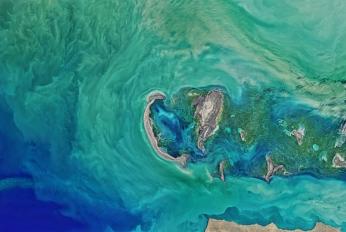 Caspian Environment Programme - Transboundary Diagnostic Analysis for the Caspian Sea. Vol. 1: Executive Summary and Environmental Quality Objectives (2002)Tue, 12/06/2018 - 11:54This TDA relies on and benefits from the dedicated work of numerous individuals, agencies, institutes, projects and corporations. The major building blocks are the studies and research works conducted and carried out by the Caspian Regional Thematic Centres. These works have been mostly produced by the national experts of th
Caspian Environment Programme - Transboundary Diagnostic Analysis for the Caspian Sea. Vol. 1: Executive Summary and Environmental Quality Objectives (2002)Tue, 12/06/2018 - 11:54This TDA relies on and benefits from the dedicated work of numerous individuals, agencies, institutes, projects and corporations. The major building blocks are the studies and research works conducted and carried out by the Caspian Regional Thematic Centres. These works have been mostly produced by the national experts of th
- Description
This TDA relies on and benefits from the dedicated work of numerous individuals, agencies, institutes, projects and corporations. The major building blocks are the studies and research works conducted and
carried out by the Caspian Regional Thematic Centres. These works have been mostly produced by the national experts of the Caspian countries and have been effectively led and substantially assisted by the National Focal Points (NFPs) and the Management Advisory Group and Inter-sectoral Assistants (MAGICAs). Production of the TDA would have not been possible without the efficient project execution assistance of UNOPS. The overall conceptualization, design, production monitoring and editing of the TDA has been led by the Programme Coordination Unit (PCU) including the Data and Information Management Theme in Baku, Azerbaijan.- Attached documents
- Metadata
- Year
- 2002
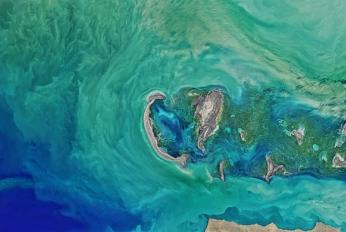 Caspian Environment Programme - Caspian Seal Conservation and Action Plan (2007)Tue, 12/06/2018 - 11:45The seal is the only marine mammal in the Caspian Sea, feeding on tulkas and other small fish, and preyed upon by land animals. It is an endemic species for the Caspian Sea and is vulnerable on that point of view. During its life history the Caspian seal migrates from the frozen North Caspian waters in the winter to the Sout
Caspian Environment Programme - Caspian Seal Conservation and Action Plan (2007)Tue, 12/06/2018 - 11:45The seal is the only marine mammal in the Caspian Sea, feeding on tulkas and other small fish, and preyed upon by land animals. It is an endemic species for the Caspian Sea and is vulnerable on that point of view. During its life history the Caspian seal migrates from the frozen North Caspian waters in the winter to the Sout
- Description
The seal is the only marine mammal in the Caspian Sea, feeding on tulkas and other small fish, and preyed upon by land animals. It is an endemic species for the Caspian Sea and is vulnerable on that point of view. During its life history the Caspian seal migrates from the frozen North Caspian waters in the winter to the South Caspian in the summer timer and back to the North to give birth to the pups on the ice. During these migration time the seals can be found everywhere in the sea.
Active conservation efforts will be required to assure the Caspian seal does not eliminate from the Earth. As a major mammal, anchoring one end of the food web, it also plays an important role in the biodiversity of the Caspian Sea and is a remarkable indicator of the Caspian ecosystems health.
- Attached documents
- Metadata
- Year
- 2007
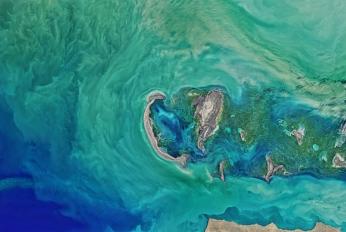 Ural River Delta BrochureTue, 05/06/2018 - 15:10The tourist brochure describes interesting species of flora and fauna of the Ural River Delta and the adjacent coastal zone of the Caspian Sea.
Ural River Delta BrochureTue, 05/06/2018 - 15:10The tourist brochure describes interesting species of flora and fauna of the Ural River Delta and the adjacent coastal zone of the Caspian Sea.
- Description
The tourist brochure describes interesting species of flora and fauna of the Ural River Delta and the adjacent coastal zone of the Caspian Sea.
- Attached documents
- Metadata
- Year
- 2018
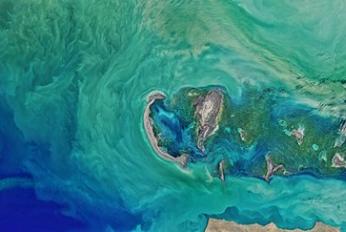 Article - Assessing the sensitivity of Caspian Kutum - Rutilus kutum- and the endangered Caspian trout - Salmo trutta caspius - to acute toxicity of nonylphenolMon, 23/04/2018 - 19:24Toxicity tests are commonly used as a tool to determine the standards of water quality for chemicals and to discover appropriate organisms as bioindicators in toxicological studies, and also could be used as an essential tool for evaluation of the pollutant effects in aquatic ecosystems. The aim of the present study was to e
Article - Assessing the sensitivity of Caspian Kutum - Rutilus kutum- and the endangered Caspian trout - Salmo trutta caspius - to acute toxicity of nonylphenolMon, 23/04/2018 - 19:24Toxicity tests are commonly used as a tool to determine the standards of water quality for chemicals and to discover appropriate organisms as bioindicators in toxicological studies, and also could be used as an essential tool for evaluation of the pollutant effects in aquatic ecosystems. The aim of the present study was to e
- Description
Toxicity tests are commonly used as a tool to determine the standards of water quality for chemicals and to discover appropriate organisms as bioindicators in toxicological studies, and also could be used as an essential tool for evaluation of the pollutant effects in aquatic ecosystems. The aim of the present study was to evaluate the sensitivity of two Caspian fish species, Caspian trout as an endangered species and Caspian Kutum using the static acute toxicity in response to nonylphenol, which is widely discharged into the Caspian Sea environment.
In addition, Caspian trout was approximately 6 times more sensitive than Caspian Kutum. Nonylphenol was reflected to be "highly toxic" to Caspian trout and "moderately toxic" to Caspian Kutum. The results could be considered in preparing plans for conservation and restocking management of Caspian Kutum and the endangered Caspian trout.
- Attached documents
- Metadata
- Year
- 2013
Document

Threats to Biodiversity - Studies and findings of CEP II Studies
Document

Decline in Bioresources
Document
1st_National Report_Russian Federation_in 2006-2007_for_Tehran Convention_-eng
Document

Monitoring of the Caspian Seal in Turkmenistan, January – October, 2022
Document

Special Issue of CAT news. The Persian Leopard: Status of Persian leopards in northern Iran and Central Asia
Document
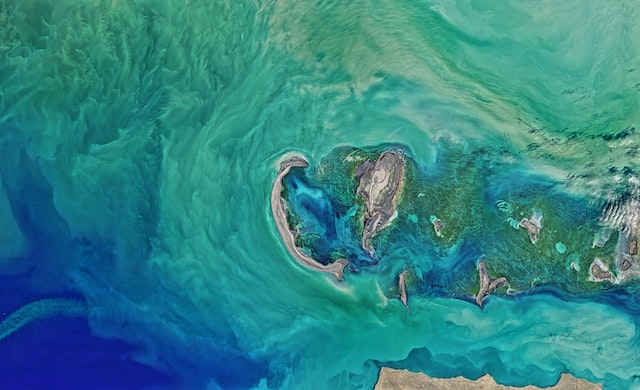
Caspian Sea State of Environment Report - SoE 2 (2019)
Document

Caspian Sea State of Environment Report - SoE 1 (2011)
Document
Биологическое разнообразие
Document
Современное состояние популяции севрюги Acipenser Stellatus (Pallas, 1776) реки Урал
Document
Отчет по показателям по биоразнообразию Казахстана
Document
National Report of the Republic of Kazakhstan on the Implementation of the Tehran Convention
Document
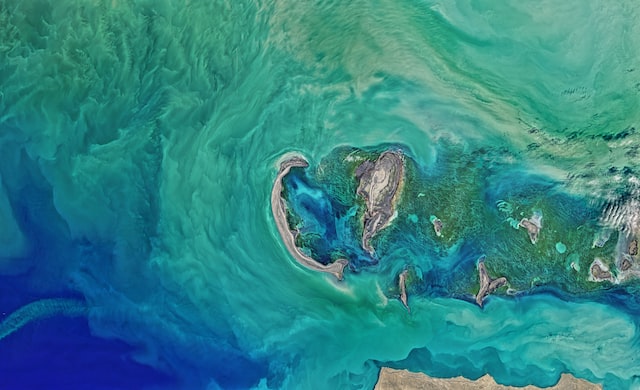
Article - Long-term and seasonal Caspian Sea level change from satellite gravity and altimeter measurements
Document

Article - Impact of the Alien Species Mnemiopsis leidyi A. Agassiz, 1865 on Fish of the Caspian Sea
Document

Turkmenistan Red Data Book Plants and Funghi
Document
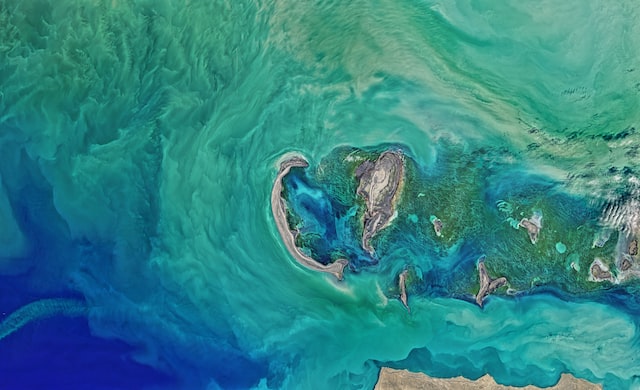
Caspian Environment Programme - Transboundary Diagnostic Analysis Revisit (2007)
Document
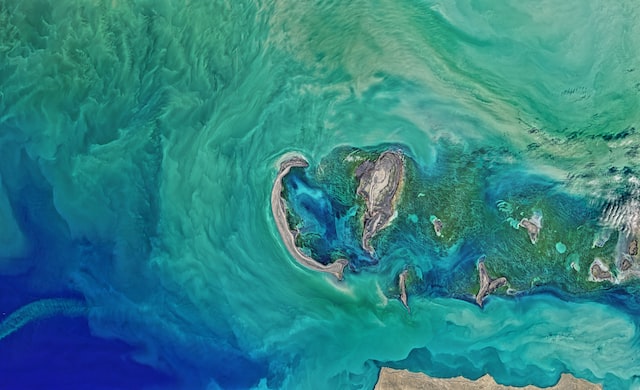
Caspian Environment Programme - Transboundary Diagnostic Analysis for the Caspian Sea. Vol. 2 (2002)
Document
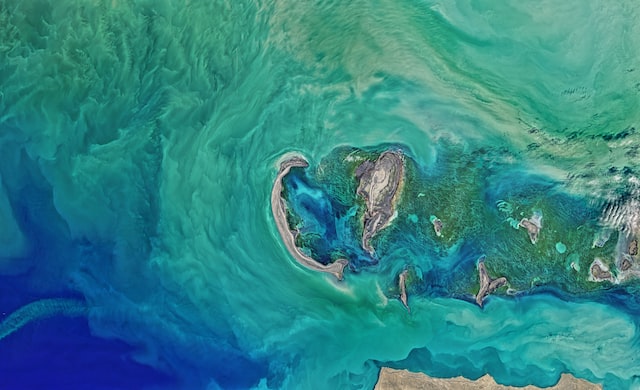
Caspian Environment Programme - Transboundary Diagnostic Analysis for the Caspian Sea. Vol. 1: Executive Summary and Environmental Quality Objectives (2002)
Document

Caspian Environment Programme - Caspian Seal Conservation and Action Plan (2007)
Document
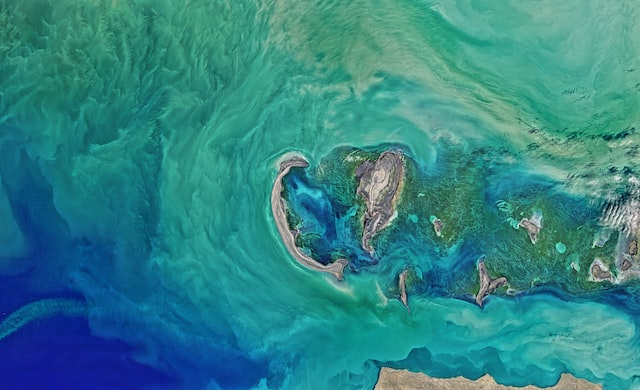
Ural River Delta Brochure
Document
